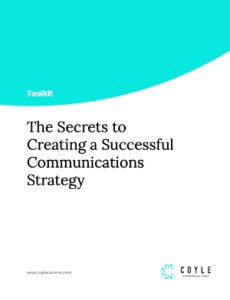Do you use filler words?
You are not alone. Many of us are unaware how often we use filler words. Now US Ambassador to Japan, Caroline Kennedy’s Senate campaign ran aground after her infamous New York Times interview in 2008 in which she uttered “you know” over 140 times over the course of the interview.
Most of us are guilty of overusing filler words in our daily speech. When giving an interview, it can sink your credibility or at least put it into question. At the very least, filler words can distract your audience, impeding your attempts at getting your message across.
For women, it goes a step further with inflection at the end of a sentence as if constantly questioning your own statements.
But “um” and “uh” no more, here are several tips for banishing filler words from your media interviews.
Tape yourself either on film or on audio. Ask a friend or colleague to conduct a mock interview on tape prior to your media interview. It can be painful but it can also be extremely helpful in determining how much or how little you use filler words.
Prepare talking points. Make sure talking points are prepared prior to your interview. Review them and rewrite them to reflect your speech patterns and personality. Become comfortable with them prior to the interview and have them within reach during the interview.
Practice interviewing. Ask a colleague to conduct the interview with you. Ask them to monitor for filler words – how often you use them, and under which circumstances. For example, before a sentence, after a sentence or to fill in airtime while you think of a response.
Use alternate phrases. If you are still struggling, look for alternate replacements. Instead of “um” or “uh”, which are often used to buy time, use a statement such as “that’s a good question” or “that is an interesting observation”. Pause after that phrase if you need more time to think.
Slow down your responses. Most of us speak at a rapid pace and are quick to respond to questions, even thinking of the answer before the interviewer has finished asking the question. Slow down, breathe, and take your time answering. A great trick a speech coach once gave me was to place my thumb under my chin with my index finger over my mouth. It accomplished two things – it got me to shut up and it made me look like a keen listener. After using this technique for a while, I became a good listener.
Put yourself in your audience’s shoes. I try to use this with every media interview and speaking engagement. Put yourself in your audience’s shoe – not your shoes – and think of what they want to hear, how they want to hear it and what will intrigue them the most about your topic.



